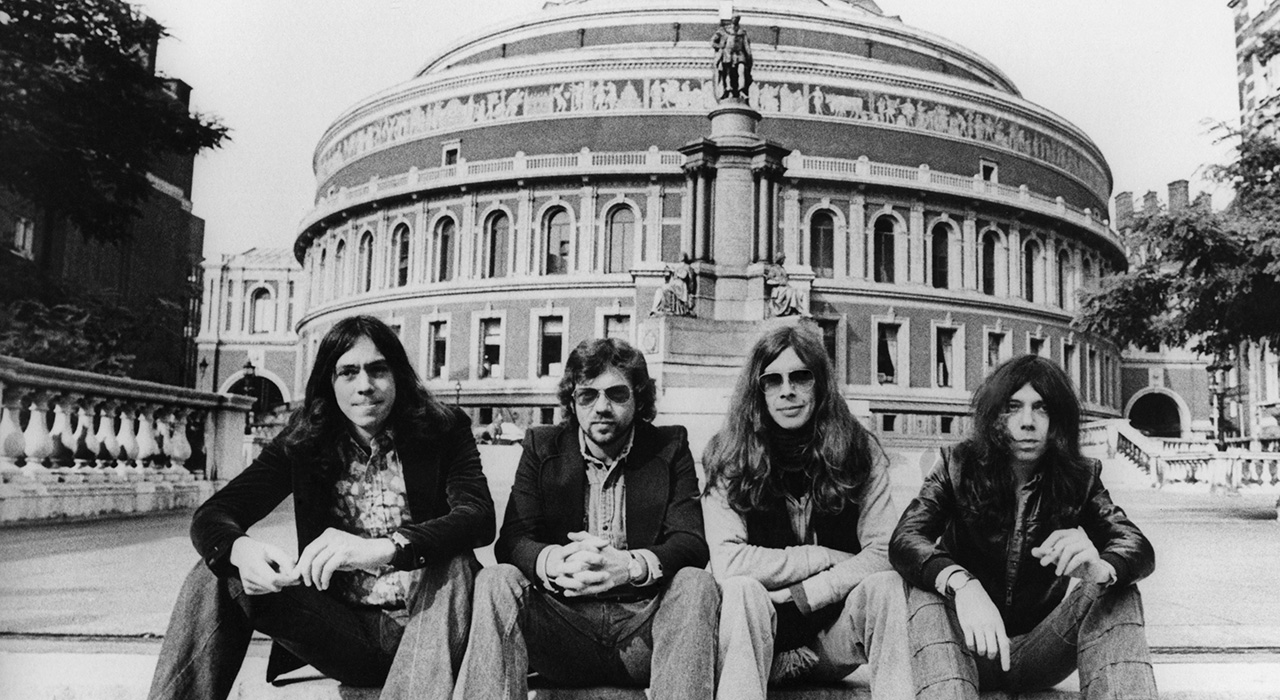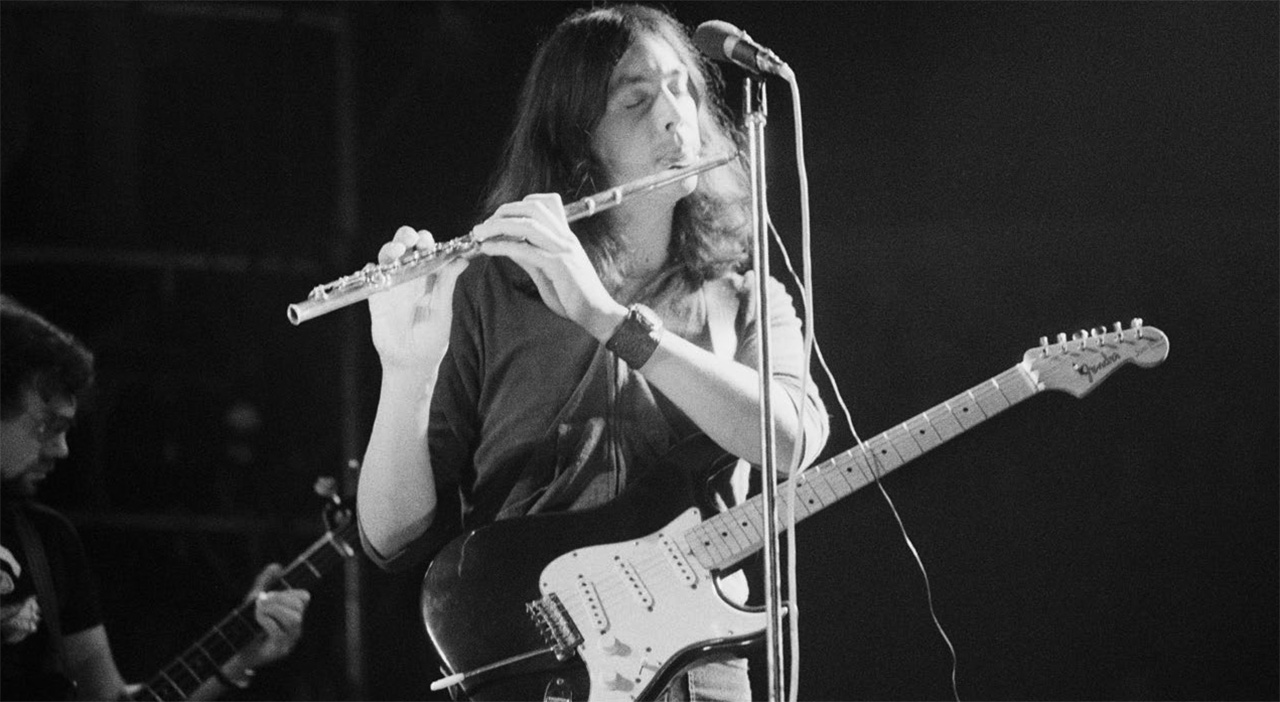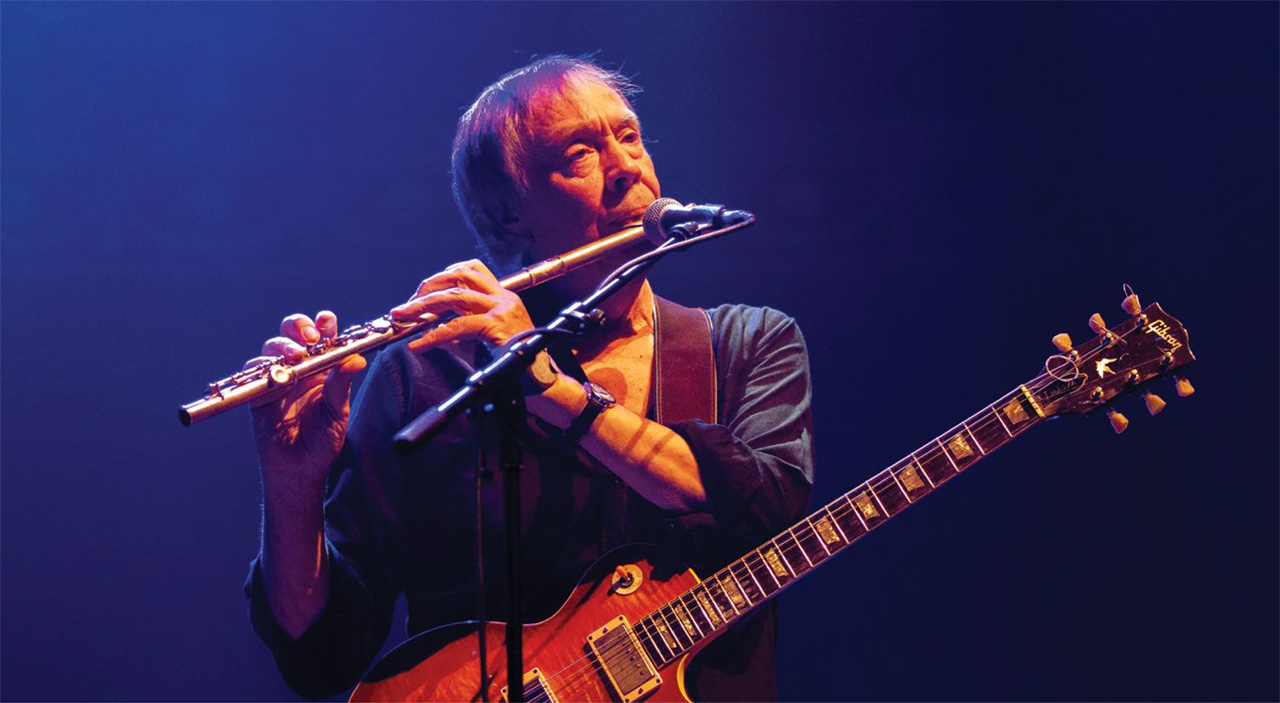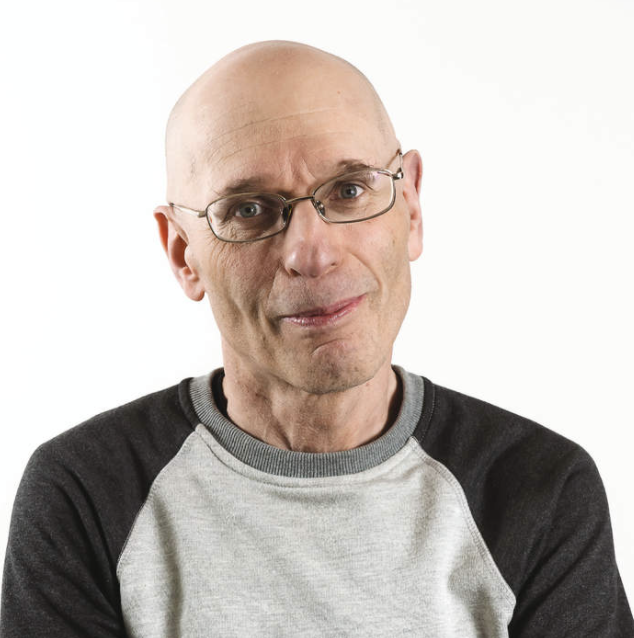“They said that even if we sold out, we’d lose £5,000. We thought the label would cover the loss. In the end, the band paid”: Camel and a tale of two visits to the Royal Albert Hall, 43 years apart
Unruly brass musicians, unrecordable horns, a runaway film crew and the surprise appearance of female fans… Andrew Latimer recalls the profile-boosting 1975 concert and morale-securing 2018 return

In the prog world, Camel are so synonymous with the Royal Albert Hall it might as well have their faces carved into its outer wall. In 2019 Andrew Latimer recalled the ups and downs of the two nights – 43 years apart – the band spent in the hallowed space.
Sometimes a band can become associated with one venue. It can be because of the number of times they’ve played there, or because of the enormous impact of their appearances. Camel’s two shows at London’s Royal Albert Hall fall into the latter category.
“I suppose they were landmark shows for us,” Andrew Latimer reflects. “In 1975, when we first did the Albert Hall, it was a sign that the band had reached a certain level of recognition. I could tell my mum and dad we were playing there and it would impress them – rather than have them ask when I was going to get a proper job!”
That gig, on October 17, 1975, was part of a major UK tour on the back of Camel’s The Snow Goose album. They’d played the Leith Theatre in Edinburgh on October 12, which didn’t leave much time for rehearsals with the London Symphony Orchestra prior to the London performance.
“We only did one rehearsal,” Latimer recalls. “It didn’t go very well. In fact, working with the LSO was very… interesting.” The collaboration was the band’s idea: “We wanted to do The Snow Goose with an orchestra, so the fans would get to hear the music in all its glory. There was no way we could afford to take an orchestra out on tour, so the idea was to do one show at a top London venue and make it a very prestigious occasion.”
They faced some steep opposition. “Our management were not at all keen on the idea. They pointed out that, financially, even if we sold out the Albert Hall, using a full orchestra would mean we’d lose £5,000. But that sort of logic made no difference to us – as far as we were concerned, our label, Decca, would cover the loss. Little did we realise that, in the end, the band would be paying.”
For Latimer, walking onto the Royal Albert Hall stage for the first time was something of an eye opener. “I’d been to the hall a couple of times previously as a fan. I went with [partner] Susan for folk shows such as Joan Baez or Peter, Paul and Mary – Susan was a big fan of both. Sitting in the Albert Hall made a big impression on me. The atmosphere was engaging.
Sign up below to get the latest from Prog, plus exclusive special offers, direct to your inbox!
“It looks such a massive venue, but it’s a lot more intimate than you might expect. Being on that stage, looking out, the audience are much closer to the band than seems to be the case when you look at photos. I’ve always preferred to be able to see the fans; that happens there.”
He admits not all of London Symphony Orchestra musicians were thrilled to be working with his band. “About half of them were into it. But the other half... well, they really didn’t care at all. As a result they were rather unruly. It wouldn’t have been a problem had we had a strong-minded conductor to keep them in check. But it was David Bedford who took the role.
“As an arranger he was brilliant – first class at getting things worked out. But as a conductor he didn’t have what it took to make sure everyone was kept in line. It can be like dealing with children when you have orchestra musicians who aren’t bothered; and David struggled to keep order.”

This problem spilled over into the gig itself, with the recording making it obvious that certain members of the orchestra lacked committed. “We had big problems when it came to mixing the tapes. You can hear lots of talking from the brass section; they’re asking one another what time the concert finishes, and arranging to go to the pub afterwards. That made it obvious how much excitement they had about it all – not a lot.”
There were also technical issues on the night, caused by microphone placements. “It was a very hard task to get the whole orchestra miked up properly; we had real difficulties with the French horn section. So we had to get their parts re-recorded in the studio at a later date.”
In 1975, I was very nervous before we went on stage. … Second time, I never had that feeling
The entire performance had been tracked, but nothing was released until 1978, when Camel put out the double album A Live Record. It featured recordings from three different tours: Mirage (1974), Rain Dances (1977) and also the Royal Albert Hall show. The latter took up the whole of the original second LP. But while it contains the entire presentation of The Snow Goose itself, it misses out the encore of Nimrodel, Supertwister and Lady Fantasy from Mirage.
“I’m not sure what happened,” Latimer admits. “I assume it was down to the space available, and the songs had to be cut to make sure The Snow Goose all fitted on. I also have no clue why it took until 1978 for the Albert Hall recording to come out. That would have been down to our management.”
The 75 show emphasised just how close the original members of Camel were. He, keyboardist Peter Bardens, bassist Doug Ferguson and drummer Andy Ward hadbeen together four years and shared a vision. “It was a fantastic time,” says Latimer. “There was an unbreakable bond between us. We were all supportive of one another and the sense of camaraderie and shared humour was really positive.
“But when Doug left in 1977 and we got in Richard Sinclair, things changed. I soon found myself reluctantly taking on a different role in the band as more of the guys left. I had to become a leader, and the whole relationship between members was a lot less cohesive. Until now. For me, the present line-up [featuring Peter Jones on keyboards, saxophone and vocals, Colin Bass on bass and vocals and Denis Clement on drums] has got back a sense of belonging we’ve not had since those early days. It feels again like it did back in those early days. And I know this comes through on the new DVD.”
Camel Live At The Royal Albert Hall was shot during their triumphant return to the venue on September 17, 2018, when the band celebrated the 1976 Moonmadness album and proved they were still a major force in the progressive world. (Ticket prices in 1975 from £2.25 for the most expensive seats, right down to 50p for those standing in the nether reaches of the auditorium. It’s a long way from the prices charged 43 years later, when a ticket at the back of the circle cost £65.)
Latimer only reluctantly agreed to do the show. “I wanted to play at the Roundhouse in London,” he explains. “It’s a smaller venue with special memories for me. But I was convinced by our management and booking agent to go back to the Albert Hall.

“In 1975, I was very nervous before we went on stage. I suppose there was a lot of pressure on us because we were doing such a prestigious hall. Second time, I never had that feeling. I was quite relaxed about it all – and it was so much fun to do the gig.”
Back in 75, Camel’s star had been in the ascendant; in 2018, they were battling against years of toil. “I was suffering from health problems and we’d had a lot of issues getting ourselves back on track. The Albert Hall date was the final one on a European tour and fate seemed to be against us for the early dates.
“I got a hernia and had to do a few gigs sitting down. Then when we were in Holland, I went down with pneumonia. I did wonder whether our luck would change for the better. But I had an operation to clear up the hernia, got over the pneumonia, and the second half of the tour really picked up.”
Getting a convincing visual representation of the night was more of a challenge than it should have been
Plans to film the Albert Hall return concert were very nearly scuppered. “We had a company lined up to take care of the camerawork. But two days before the event they suddenly pulled out, and that left us high and dry. That was a crisis. It looked like we wouldn’t find anyone to step in at such short notice – but we did manage it.”
The new arrangement came at an artistic cost to the production. “If you’re filming at the Albert Hall, the venue reserves certain seats for the cameras, so all the angles are covered,” Latimer explains. “When the original company withdrew, we allowed them to sell some of these production seats. So while we did have eight cameras at the gig, some of the angles couldn’t be covered.
“When we came to looking at the footage, there were glaring holes. For instance, when Pete did a solo, there should have been a camera trained on him – but because there was no room, we couldn’t do it. That was very frustrating. Getting a convincing visual representation of the night was more of a challenge than it should have been.”
If there’s one big difference between the Royal Albert Hall shows, Latimer says, it’s in the audiences. “We’re getting a lot more women to shows now. We’re just not used to it. Back in 75, the only women at the venue were those dragged along by husbands or boyfriends – and I bet they hated every minute of what they had to endure! It’s great now to look out and see women who come along for the right reason: because they enjoy the music.”
Looking back, he regards his experiences with the Albert Hall as invaluable to him and the band. “Both times have been very special – among the most important highlights we’ve had.
“In 1975, the fact we could sell out the Albert Hall meant Camel were suddenly seen as a big name. It gave us a profile. We didn’t know what to expect last year; but as soon as we came on, the reaction from the fans was overwhelming. We could feel the warmth and affection coming from everyone – that was a very emotional moment.”
Malcolm Dome had an illustrious and celebrated career which stretched back to working for Record Mirror magazine in the late 70s and Metal Fury in the early 80s before joining Kerrang! at its launch in 1981. His first book, Encyclopedia Metallica, published in 1981, may have been the inspiration for the name of a certain band formed that same year. Dome is also credited with inventing the term "thrash metal" while writing about the Anthrax song Metal Thrashing Mad in 1984. With the launch of Classic Rock magazine in 1998 he became involved with that title, sister magazine Metal Hammer, and was a contributor to Prog magazine since its inception in 2009. He died in 2021.
You must confirm your public display name before commenting
Please logout and then login again, you will then be prompted to enter your display name.




